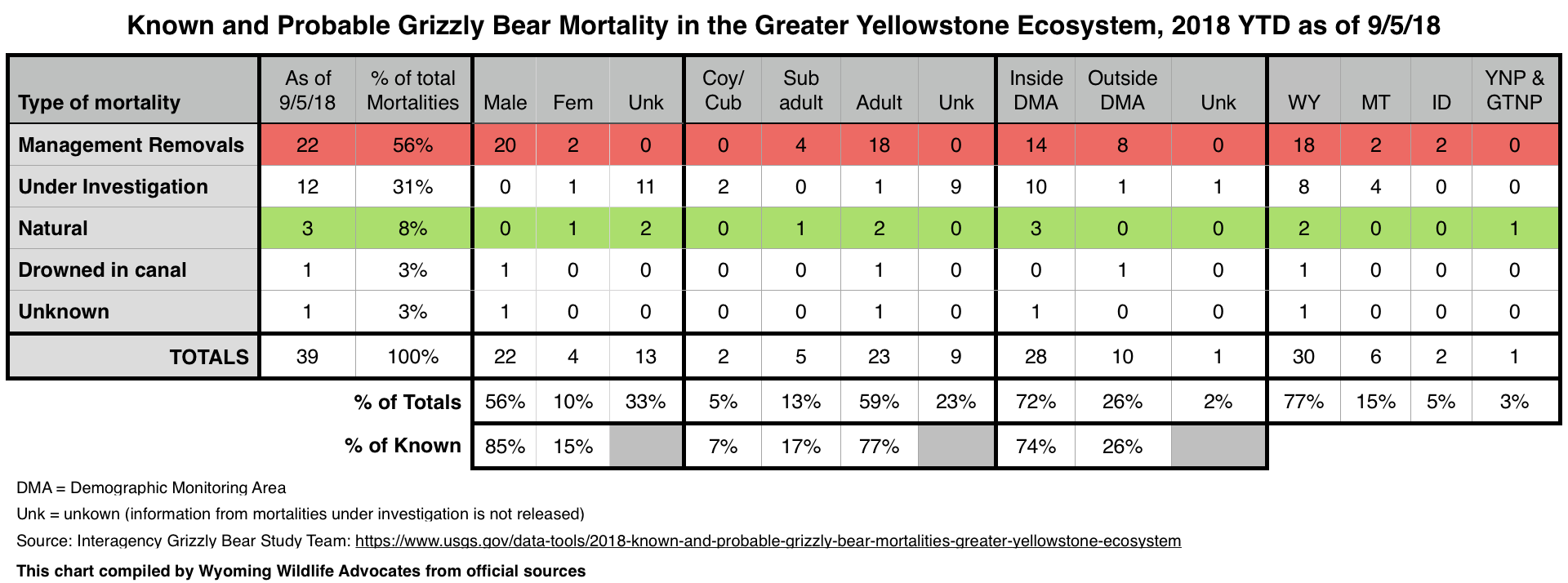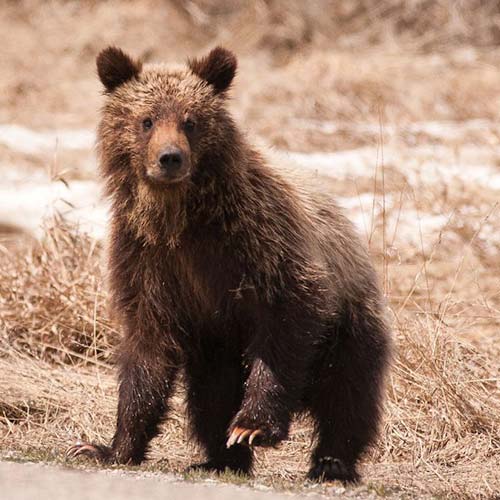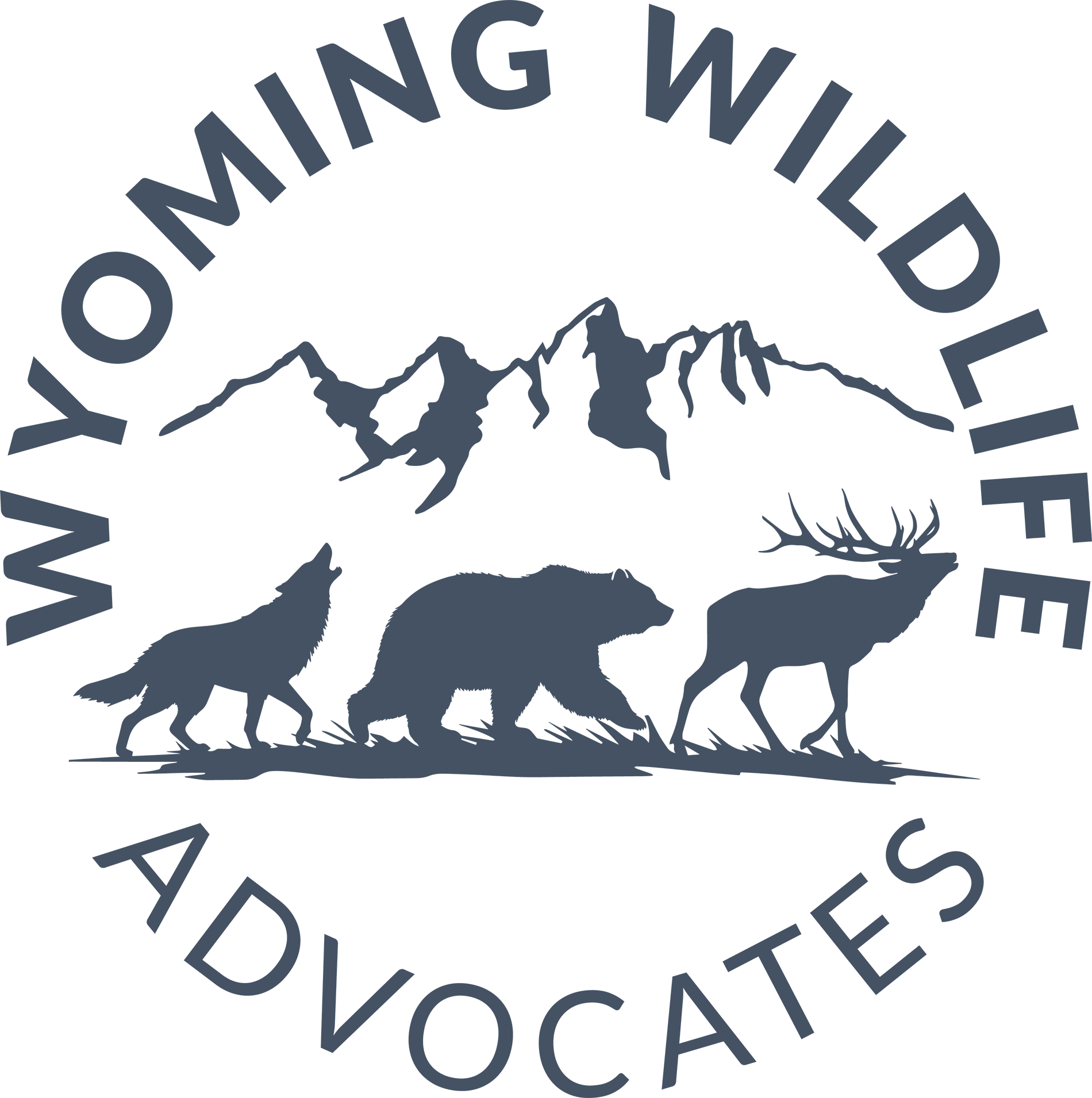New data released to the public by the Interagency Grizzly Bear Study Team (IGBST) now reveals that grizzly mortality in the GYE is significantly higher than our statement yesterday indicated. On September 4th, the data indicated 35 known or probable mortalities: a number nearly 70% higher than the same date in 2017. However, given yesterday’s unexpected addition of four more bears – for a total of 39 – the percentage is now 86% higher than today’s date last year.
The distribution of the fatalities remains similar; 90% of grizzly mortalities in 2018 have been human-caused.
“This statistic is so critical to monitoring the health of our grizzly population, and the trend that we’re witnessing is extremely concerning,” says Melissa Thomasma, Executive Director of Wyoming Wildlife Advocates. “Hunting season for elk and deer is beginning in the region, and that will very likely lead to a further increase in these worrying numbers.”
This unprecedented rate of grizzly mortality generates additional concern as these bears could still face trophy hunting in a matter of days. “With a record-breaking number of grizzlies already dead in 2018, it’s unthinkable to justify hunting them at this point.”
Please see the updated mortality chart, as well as WWA’s original press release from September 4th below.

Click here for the IGBST data.

PRESS RELEASE – September 4, 2018
JACKSON HOLE, WY – According to data released by the Interagency Grizzly Bear Study Team, as of September 4, there have been 35 known or probable grizzly bear mortalities in the Greater Yellowstone Ecosystem in 2018. This number represents an increase of 66% over last year’s toll of 21 deaths at the same date.
Over half of mortalities are from “Management Removals,” and 31% are “Under Investigation,” which means that 88% of grizzly deaths this year have been human-caused. “Under Investigation” usually indicates that a grizzly was illegally poached, killed in self-defense or in defense of livestock, or by a hunter as a result of mistaken identity. Management removals typically are a result of conflicts with livestock or humans. Of the remaining bear deaths, only 9% are classified as “Natural.” (See attached table.)
With the region’s deer and elk hunting beginning, the number of bears killed as a result of conflicts with people is almost certain to continue its upward trajectory. In 2017, at least 11 grizzlies died as a result of hunting-based conflicts.
“Especially with a trophy hunt of grizzlies still potentially on the horizon, this year’s mortality numbers are deeply concerning,” says Wyoming Wildlife Advocates Executive Director Melissa Thomasma. “This unprecedented mortality rate underscores the fact that this hunt is not supported by science.”
Noting that a two-week restraining order recently halted a grizzly bear hunt that was scheduled to begin on September 1st in Wyoming and Idaho, Thomasma adds “It’s impossible to know what the ramifications of killing even more grizzlies could be for the long-term health of the population. However, the data is clear; significantly more bears have died in 2018 than in previous years. The additional pressure of a hunt could be catastrophic.”


